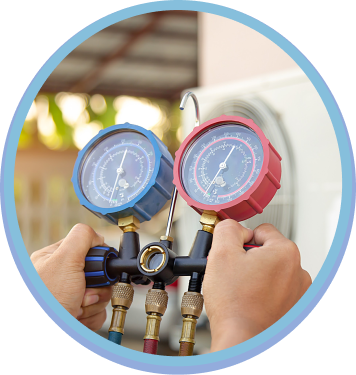When Is The Right Time To Schedule AC Maintenance?
Many technicians recommend maintenance sometime before the cooling season is in full swing. This helps to ensure that your system performs satisfactorily. While a maintenance visit doesn’t guarantee that an AC system won’t break down in the future, it lowers your chances, as a well–maintained system should continue to run smoothly for longer than one that receives little attention at all. If it’s the middle of summer and a lot of time has passed since a technician visited your system, the experts at MVP Electric, Heating & Cooling still recommend AC maintenance ASAP. It’s better to schedule this service now than to wait for a major breakdown to inconvenience you in the future.
Annual maintenance is the easiest way to avoid midsummer breakdowns and high bills. If any of the signs below sound familiar, it’s time to book a preventive tune-up.
- It’s been 12+ months since service: Yearly maintenance protects efficiency and comfort.
- Dirty or clogged filters: Reduced airflow strains components and increases energy use.
- Longer run times to reach setpoint: Dirty coils, low refrigerant, or weak airflow reduce cooling capacity.
- Higher utility bills: Efficiency drops over time without cleaning, calibration, and testing.
- Musty odors at start-up: Condensate or coil issues can lead to microbial growth if not addressed.
- Short cycling or hard starts: Maintenance checks electrical connections, capacitors, and safeties.
- Uneven room temps: Tune-ups verify blower performance and duct/vent balancing.
- Warranty requirements: Many manufacturers require documented maintenance to keep coverage valid.
Regular tune-ups include coil cleaning, electrical checks, refrigerant verification, and performance testing to keep your AC running like it should.
On a budget? Apply for financing online or call (913) 395-6558 to learn more.
What’s Included in A/C Tune-Up
Here’s the full inspection and cleaning checklist our techs complete to keep your system efficient and reliable.
- Thermostat calibration and mode/temperature verification
- Air filter check and replacement if provided by homeowner
- Condenser coil rinse/clean and debris removal around unit
- Evaporator coil visual inspection (where accessible)
- Measure temperature split (ΔT) across supply/return
- Static pressure snapshot to flag airflow restrictions
- Run capacitor test and verify microfarads (μF) within tolerance
- Inspect contactor points for pitting and proper operation
- Blower motor inspection and amp-draw reading
- Condenser fan motor inspection and amp-draw reading
- Clear and flush condensate drain; add pan treatment/algaecide as needed
- Refrigerant performance check (superheat/subcool indicators)
- Tighten electrical connections and inspect wiring/safety controls
- Quick duct/vent check for supply/return obstructions
- System start-up/shut-down test and final performance review
Heads-up: If we spot worn parts or low charge, we’ll review options and pricing before any repair.


